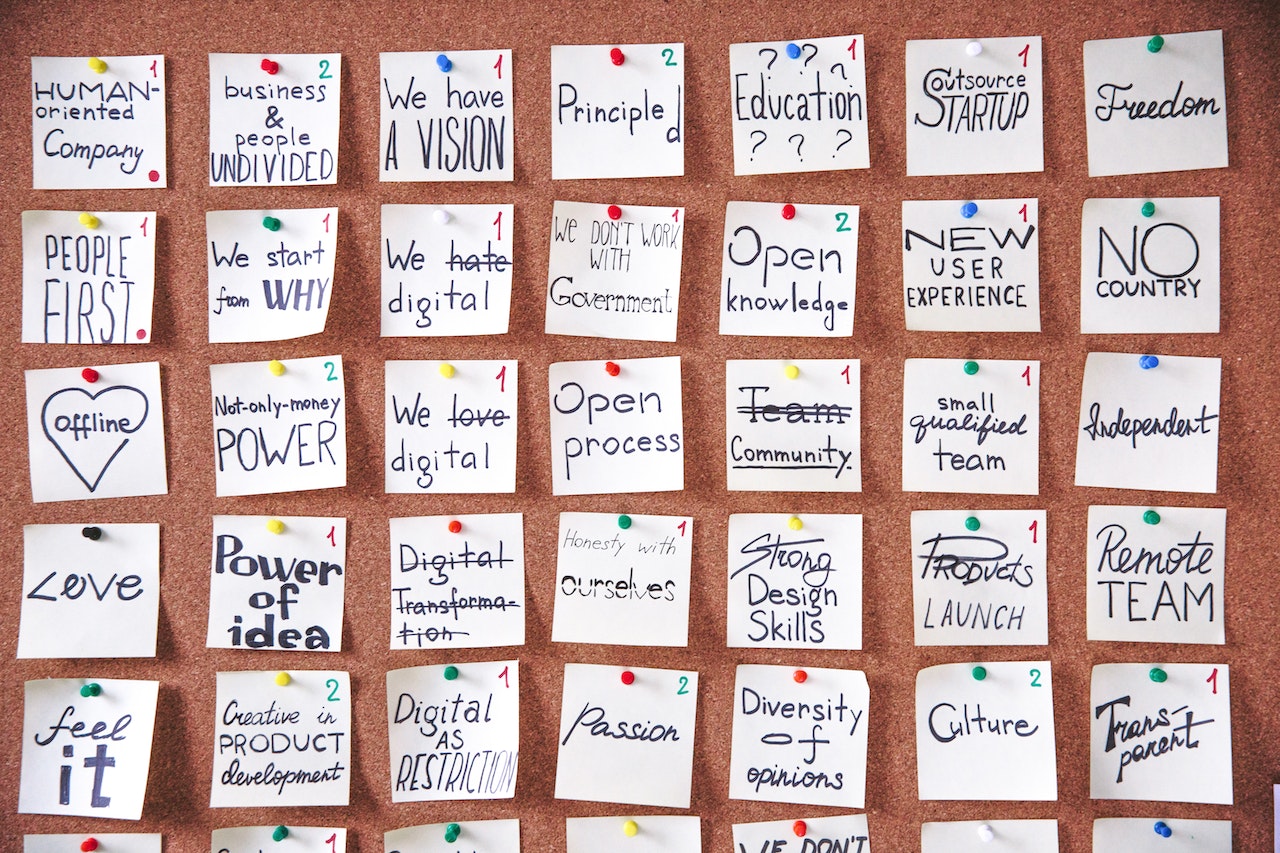Content Marketing for Nonprofits in 2024: An Expert’s Guide
So, how does a nonprofit “market” itself to its intended audience? It’s understandable if this question feels more than a little challenging. Fortunately, I’ve got some tips that will help you out. Here is a guide to content marketing for nonprofits in 2023.
Table of Contents
What is the Role of Content Marketing for Nonprofits?
It takes a lot to run a nonprofit organization. Considering that, you might not think that investing in marketing for nonprofits will be worth it. Fortunately, that’s not the case. A nonprofit that begins a content marketing campaign often accomplishes a few important goals.
These goals are raising both awareness and funds. If no one is aware of your nonprofit, it’s hard for it to raise money. If it isn’t running money, it’s hard for a nonprofit to remain in operation. Fortunately, nonprofit marketing focuses on fixing both of these problems.
Regardless of where it’s being posted, having content for the public to find and enjoy gets your nonprofit in people’s minds.
9 Tips for a Great Nonprofit Content Marketing Strategy
After learning how content marketing helps nonprofits, it’s time to learn how you can start doing this for your organization. We will now be going through each of my content marketing for nonprofits tips.
1. It’s Not Just About Getting Money
At this point, you might be thinking “you doofus, of course it’s about money!” After all, nonprofits rely on funds from donors. Let me explain.
Stanford did a recent study on what’s called the time-ask benefit. Since it keeps nonprofits going, most of them are used to asking donors how much money they’d like to donate. Instead, try asking donors how much time they’d donate to your nonprofit.
Here’s the crazy part of this study: charities asking for time over money wound up receiving more money than nonprofits only asking for money!
2. Take a Closer Look at Your Donors
Of course, nonprofits depend on donors to continue operating. With that in mind, it’s important to take a closer look at who’s giving back and why. Start this process by looking at donors that stand out from the pack. This can be people who’ve given the most or have been giving the longest.
What makes them so drawn to your nonprofit when there are so many out there? Figure this out and you have the foundation of your strategies involving content marketing for nonprofits.
3. Get Creative With Your Marketing Strategies
Many organizations think of content marketing for nonprofits as creating a website, posting content there, and leaving it at that. If you want to stand out, I urge you to try lots of content marketing methods. As they say, “variety is the spice of life.”
So, what kind of content are we talking about here? A few platforms that can provide a great ROI include social media, email marketing, and video-based content. No, this doesn’t mean you necessarily have to build up a YouTube presence (although that does help raise awareness).
With so many things moving remotely, webinars are great ways to connect with those who want to learn more about your nonprofit. Did you know that a single webinar can result in over 1,000 new leads for your nonprofit? For more information on this topic, Cloud Income recently came up with a list of interesting webinar statistics and facts worth checking out.
If you need a little inspiration, feel free to check out several of my personal favorite content marketing blogs. By checking out the list of content marketing websites, you’ll have more than enough inspiration to get started.
4. Have Goals in Place
I don’t want to sound like a motivational speaker at a high school or anything, but goals are great! I was someone who fought having goals for a while. But, seriously, it works. You don’t have to set aside a day, or even an hour, to start doing this.
If you want to try this, just write what you want to accomplish today or tomorrow. You don’t need to move mountains or anything, just list tasks you can comfortably complete on this day or the next one.
As you’re thinking about what needs to get done, also think about what you want to get out of content marketing for nonprofits. You can think in terms of a week, month, whatever is most comfortable for you. Content marketing drives sales, engagement, traffic, donors, and just about anything else you want it do.
When you have them, type or write these goals down. Good, that’s all you need to do. Set these aside somewhere important. Now, we’ll start learning how to measure these goals.
5. Measuring Your Results
By this point, you should have an idea of what you want to create and where it will go. After this, you only need to measure the results of what you’re posting. What kind of results am I talking about? Fortunately, content marketers have ways of knowing how well (or badly) their content performs.
You don’t need to be an expert marketer to use these tools. When you begin measuring the results of your nonprofit content marketing strategy, look for a few of these factors. If you need outside help with this, a content marketing specialist might be the perfect solution.
Impressions
This is a term for how many times your nonprofit’s content is being shown to someone. For example, someone searches for an education nonprofit in Los Angeles and your nonprofit’s website shows up. You earn one impression each time this happens.
Clicks
If impressions are good, clicks are even better. As I’ve mentioned, impressions occur when someone sees your website or advertisement. If they take action and like what they see, they’ll click the link in your ad. Boom, you’ve earned a click.
Conversions
Going with the theme, conversions are even better than clicks. After clicking through to your nonprofit’s landing page, you want the visitor to take some type of action. This can be anything from providing their email addresses or donating directly to your nonprofit. If you’ve taken them through the visitor’s journey correctly, you’ll start earning conversions.
6. Don’t Forget the Importance of a Call to Action
Another important aspect of content marketing for nonprofits is to have calls to action. In the world of marketing, a call to action is a way to guide your readers about the next step you want them to take.
If your nonprofit wants to get people on the phone, you might use a call to action that invites people to call you right away.
Do you need some inspiration for creating call to actions? Here are a few commonly used CTAs:
- Donate today
- Donate now
- Learn more
- Contribute now
- Help our organization
- Help our nonprofit
7. Show, Don’t Tell
I know, pretty rich advice for someone that’s currently working on a draft for this article that’s at 1,500 words (so far). At this point, I can’t tell you how many words this one will end up being. You can imagine a person sitting at a computer, dogs at his side, while the keyboard clicks away in perfect rhythm…
That last sentence is an example of telling stories descriptively. You can also use images and videos as parts of your nonprofit’s content marketing efforts.
8. Learn Search Engine Optimization



Another tip I want to include in this guide on content marketing for nonprofits is how beneficial SEO can be for your organization. SEO helps websites rank higher in search engines. Considering that, SEO is also a powerful tool to get your nonprofit’s key messages in front of more people.
Optimizing your nonprofit’s website is also a cost-effective marketing strategy. Certain types of marketing for nonprofits can cost hundreds or thousands of dollars per month. But this method only takes high-quality written content if your nonprofit is on a tight budget.
9. Gain a Presence on Social Media



Another cost-effective content marketing for nonprofits strategy is making the most of social media. Each day, many nonprofit organizations gain lots of support donations. There’s a laundry list of social media websites out there. But, for the best results, I recommend that your nonprofit marketers focus on the bigger sites, including:
- TikTok
If your organization doesn’t have accounts on these platforms, I recommend you sign up and start creating accounts on these websites.
One of the key things to do on social media is create content. This sounds easy, but I see many businesses create social media pages and make a few posts. Then, a few months later, there’s nothing new. And, these companies wonder why they don’t have many followers.
If you want to engage audiences on social media, share news and links that your audience will find interesting. Another one of my favorite social media strategies is to communicate with commenters. It might surprise you how well these strategies pay off in terms of increasing likes and followers.
What Are the Benefits of Content Marketing for Nonprofits?
Before we get too in-depth, you might be wondering about the benefits of content marketing for a nonprofit organization. Here’s why this form of marketing is worth your nonprofit’s time.
It Gives Your Nonprofit Focus
While your nonprofit endeavor might not do a lot of things as a business would, both of these things need focus. And content marketing can help any nonprofit organization increase its focus.
How? By giving your nonprofit a platform, a way to measure success, and a method to improve results. With this focus, you’ll be amazed at how quickly your nonprofit weeds out what works and what doesn’t.
Content Marketing Provides Results
Still not convinced about the effectiveness of content marketing for nonprofits? Some outside research might convince you otherwise!
Research from Lauro Media found that marketers who post new content regularly experience 13 times the ROI of those who don’t.
HubSpot found that companies that adopt content marketing experience a conversion rate that’s six times higher than companies without this strategy.
Another study from Aberdeen in 2020 found that content marketing provides three times the leads of a traditional marketing campaign (television, radio, print). Plus? This same research found that content marketing costs 63% less than traditional marketing methods.
Get People and Businesses Engaged
Engagement – it’s that word commonly sent out by marketing managers about as often as the word “funnel.” Getting your company’s audience engaged in your business is incredibly important.
But how does content marketing bridge the gap between nonprofits and engaged readers? For one, content marketing allows your nonprofit to tell a deep and compelling story.
What Should Be In Your Nonprofit’s Marketing Strategy?
Before you start creating your strategy involving content marketing for nonprofits, it’s good to know what you should be focusing on. With that in mind, here are several things to include for an effective content marketing strategy.
Content Positioning and Themes (What Subjects You’ll Choose)



When creating a nonprofit content marketing strategy, you’ll first need to consider content themes. As you likely know, there is a wide range of nonprofit organizations throughout the world.
Some of these organizations focus on fundraising efforts for animals, other nonprofit organizations might focus on saving the earth or giving people a place to receive shelter and clothing.
Nonprofit marketing promotes whatever your organization’s mission is.
Generally speaking, this first part of any plan regarding content marketing for nonprofits should be easy to figure out. Running a modern nonprofit about animals? Create content that would appeal to animal lovers.
There are a few ways to find out about your target audience. A great way to do this is by looking at what else your followers follow on their social media pages.
After a little research, you’ll learn what subjects to focus your marketing efforts on.
Goals (What You’re Hoping to Get)



You now know what subject matter to choose to get your organization’s mission across to the world. That’s great. Now, it’s time to decide what your nonprofit hopes to gain from its target audiences.
Creating marketing goals is an essential part of this process. What are you hoping to gain from your marketing plan? A few common goals of effective content marketing for nonprofits includes:
- Receiving more donations
- Gaining more donors
- Increasing how much potential donors donate
- Raising awareness about a campaign or issue
Does your nonprofit have to focus on one or all of these goals? No, but most nonprofits do.
Channels (What Types of Content Will You Create?)



Content marketing is a type of inbound marketing, meaning that you’re creating visual content to spread awareness of your nonprofit. With that in mind, there are many communication channels your nonprofit can use to increase awareness.
You can create and share content on social media platforms. Social media websites are ones like Facebook, Instagram, Twitter, and others that many marketers use to get their ideas and campaigns out there.
Another great way to enjoy success through content is by creating and posting videos. Get your video content in front of the largest audience possible by posting to YouTube.
Besides using social media and posting videos, it’s also to post more content to your nonprofit’s website. You don’t have to overboard and post multiple pieces of content each day. I’d recommend that you aim to post at least once per week on your organization’s blog or website. Also, post at least a few times per week on social media.
In closing, I hope that this gives you a better understanding of content marketing for nonprofits. I’ve always loved working with nonprofits because they’re run by such amazing people and support great causes. Check out Content Marketing Life’s blog for more great tips.



Alex Eagleton is a copywriter and digital marketer passionate about helping companies connect with customers. Throughout the past decade, he’s worked with companies including Referral Rock, Connecteam, and Ramsey Solutions. He’s a versatile writer who understands how to align with companies, truly matching their voices and tones.
When he’s not writing, he enjoys spending time with his dogs, reading, and playing guitar.
You can reach him by emailing alex@contentmarketinglife.com.







